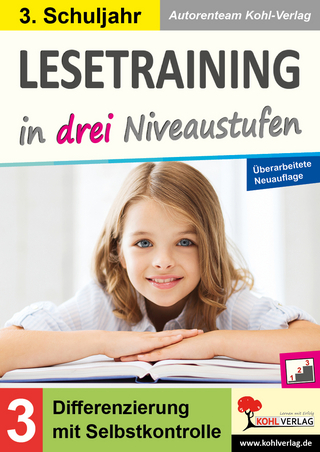
Living Things for Grades 3-5
Portage & Main Press (Verlag)
978-1-55379-875-0 (ISBN)
- Titel z.Zt. nicht lieferbar
- Versandkostenfrei innerhalb Deutschlands
- Auch auf Rechnung
- Verfügbarkeit in der Filiale vor Ort prüfen
- Artikel merken
emphasizes Core Competencies, so students engage in deeper and lifelong learning
develops Curricular Competencies as students explore science through hands-on activities
fosters a deep understanding of the Big Ideas in science
Using proven Hands-On features, Living Things for Grades 3–5 contains information and materials for both teachers and students including: Curricular Competencies correlation charts; background information on the science topics; complete, easy-to-follow lesson plans; digital reproducible student materials; and materials lists. Innovative new elements have been developed specifically for the new curriculum:
a multi-age approach
a five-part instructional process—Engage, Explore, Expand, Embed, Enhance
an emphasis on technology, sustainability, and personalized learning
a fully developed assessment plan for summative, formative, and student self-assessment
a focus on real-life Applied Design, Skills, and Technologies
learning centres that focus on multiple intelligences and universal design for learning (UDL)
place-based learning activities, Makerspaces, and Loose Parts
In Living Things for Grades 3–5 students investigate plants and animals. Core Competencies and Curricular Competencies will be addressed while students explore the following Big Ideas:
Plants and animals have observable features.
Living things have features and behaviours that help them survive in their environment.
Living things have life cycles adapted to their environment.
Jennifer E. Lawson, PhD, is the creator of the Hands-On books published by Portage & Main Press. As senior writer and editor for the series, she has contributed to more than 50 publications for teachers and students. Jennifer provides professional development workshops for educators locally, nationally, and virtually, and is a Workplace Wellness Advisor. Her most recent book is a collective effort called Teacher, Take Care: A Guide to Well-Being and Workplace Wellness for Educators. She is also one of the founders of Mission to Mexico, an organization that supports schools in some of the most impoverished communities in Puerto Vallarta. Throughout her extensive career in education, Jennifer has worked as a classroom teacher, resource and special education teacher, consultant, principal, university instructor, and school trustee. She lives with her family in Winnipeg, Manitoba.
Introduction to Hands-On Science 5
About Hands-On Science 5
Format of Hands-On Science 5
The Multi-Age Approach 6
Inquiry and Science 6
The Goals of Science Education in British Columbia 6
Hands-On Science Principles 7
Cultural Connections 8
Indigenous Perspectives and Knowledge 9
References 12
How to Use Hands-On Science in Your Classroom 13
Multi-Age Teaching and Learning 13
Module Overview 13
Talking Circles 16
Multiple Intelligences Learning Centres 17
Icons 18
Makerspaces 19
References 20
Curricular Competencies: How to Infuse Scientific Inquiry Skills and Processes Into Lessons 21
Observing 21
Questioning 21
Exploring 21
Classifying 22
Measuring 22
Communicating, Analyzing, and Interpreting 23
Predicting 25
Inferring 25
Inquiry Through Investigation and Experimentation 25
Inquiry Through Research 26
Addressing Students’ Literacy Needs 27
Online Considerations 27
References 28
The Hands-On Science Assessment Plan 29
Student Self-Assessment 29
Formative Assessment 31
Summative Assessment 32
Indigenous Perspectives on Assessment 33
Connecting Assessment to Curricular Competencies 33
Module Assessment Summary 34
Important Note to Teachers 34
References 34
Assessment Reproducibles 35
How Do Living Things Survive in Their Environment? 59
About This Module 60
Curriculum Learning Framework 65
Curricular Competencies Correlation Chart 67
Resources for Students 69
1 Initiating Event: What Do We Observe, Think, and Wonder About Living Things in Their Environment? 77
2 What Can We Learn About Living Things Through Storytelling? 83
3 What Do We Know About How Living Things Survive in Their Environment? 88
4 What Do We Know About Habitats, Communities, and Ecosystems? 93
5 What Are Some Special Features of Plants? 99
6 What Is a Fungus? 109
7 Why Do Organisms Live in Certain Habitats and Biomes? 114
8 What Are the Characteristics of Producers, Consumers, and Decomposers? 120
9 What Is a Food Chain? 125
10 What Is a Food Web? 130
11 How Do Plants Adapt to Survive in Their Environment? 134
12 How Do Animals Adapt to Survive in Their Environment? 140
13 What Is Biodiversity? 147
14 How Do Humans Sense and Respond to Their Environment? 155
15 How Do Humans Stay Healthy? 164
16 What Happens to Food After We Eat It? 173
17 Why Is Healthy Blood Red? 179
18 How Does Exercise Affect Your Heart and Lungs? 187
19 How Do Healthy Joints, Bones, and Muscles Help You Move? 195
20 Personal Inquiry Project: What More Do We Want to Know About How Living Things Survive in Their Environment? 205
Appendix: Image Banks 209
About the Contributors 217
| Erscheinungsdatum | 10.01.2022 |
|---|---|
| Zusatzinfo | Illustrations, unspecified |
| Sprache | englisch |
| Maße | 215 x 279 mm |
| Themenwelt | Schulbuch / Wörterbuch ► Unterrichtsvorbereitung |
| Sozialwissenschaften ► Pädagogik | |
| ISBN-10 | 1-55379-875-9 / 1553798759 |
| ISBN-13 | 978-1-55379-875-0 / 9781553798750 |
| Zustand | Neuware |
| Haben Sie eine Frage zum Produkt? |
aus dem Bereich


